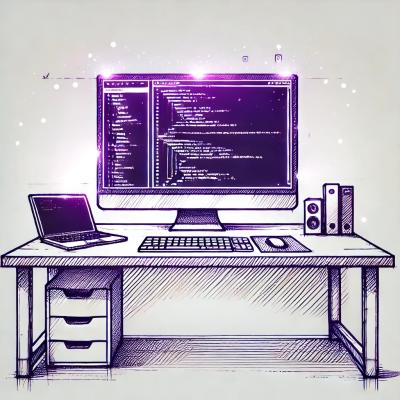
Security News
MCP Community Begins Work on Official MCP Metaregistry
The MCP community is launching an official registry to standardize AI tool discovery and let agents dynamically find and install MCP servers.

Manim is an animation engine for explanatory math videos. It's used to create precise animations programmatically, as seen in the videos at 3Blue1Brown.
This repository contains the version of manim used by 3Blue1Brown. There is also a community maintained version at https://github.com/ManimCommunity/manim/. To get help or to join the development effort, please join the discord.
Manim runs on Python 3.6 or higher version. You can install it from PyPI via pip:
pip3 install manimlib
System requirements are cairo, ffmpeg, sox (optional, if you want to play the prompt tone after running), latex (optional, if you want to use LaTeX).
You can now use it via the manim command. For example:
manim my_project.py MyScene
For more options, take a look at the Using manim sections further below.
If you want to hack on manimlib itself, clone this repository and in that directory execute:
# Install python requirements
python3 -m pip install -r requirements.txt
# Try it out
python3 ./manim.py example_scenes.py SquareToCircle -pl
Install Cairo. For most users, pycairo‑1.18.0‑cp37‑cp37m‑win32.whl will do fine (you can download it or other versions from here).
pip3 install C:\path\to\wheel\pycairo‑1.18.0‑cp37‑cp37m‑win32.whl
Install a LaTeX distribution. MiKTeX is recommended.
Install the remaining Python packages.
git clone https://github.com/3b1b/manim.git
cd manim
pip3 install -r requirements.txt
python3 manim.py example_scenes.py SquareToCircle -pl
conda env create -f environment.ymlpyreadline via pip install pyreadline.virtualenv and virtualenvwrapperAfter installing virtualenv and virtualenvwrapper
git clone https://github.com/3b1b/manim.git
mkvirtualenv -a manim -r requirements.txt manim
python3 -m manim example_scenes.py SquareToCircle -pl
Since it's a bit tricky to get all the dependencies set up just right, there is a Dockerfile and Compose file provided in this repo as well as a premade image on Docker Hub. The Dockerfile contains instructions on how to build a manim image, while the Compose file contains instructions on how to run the image.
The prebuilt container image has manim repository included.
INPUT_PATH is where the container looks for scene files. You must set the INPUT_PATH
environment variable to the absolute path containing your scene file and the
OUTPUT_PATH environment variable to the directory where you want media to be written.
INPUT_PATH=/path/to/dir/containing/source/code \
OUTPUT_PATH=/path/to/output/ \
docker-compose run manim example_scenes.py SquareToCircle -l
The command needs to be run as root if your username is not in the docker group.
You can replace example.scenes.py with any relative path from your INPUT_PATH.

After running the output will say files ready at /tmp/output/, which refers to path inside the container. Your OUTPUT_PATH is bind mounted to this /tmp/output so any changes made by the container to /tmp/output will be mirrored on your OUTPUT_PATH. /media/ will be created in OUTPUT_PATH.
-p won't work as manim would look for video player in the container system, which it does not have.
The first time you execute the above command, Docker will pull the image from Docker Hub and cache it. Any subsequent runs until the image is evicted will use the cached image. Note that the image doesn't have any development tools installed and can't preview animations. Its purpose is building and testing only.
Try running the following:
python3 -m manim example_scenes.py SquareToCircle -pl
The -p flag in the command above is for previewing, meaning the video file will automatically open when it is done rendering. The -l flag is for a faster rendering at a lower quality.
Some other useful flags include:
-s to skip to the end and just show the final frame.-n <number> to skip ahead to the n'th animation of a scene.-f to show the file in finder (for OSX).Set MEDIA_DIR environment variable to specify where the image and animation files will be written.
Look through the old_projects folder to see the code for previous 3b1b videos. Note, however, that developments are often made to the library without considering backwards compatibility with those old projects. To run an old project with a guarantee that it will work, you will have to go back to the commit which completed that project.
While developing a scene, the -sp flags are helpful to just see what things look like at the end without having to generate the full animation. It can also be helpful to use the -n flag to skip over some number of animations.
Documentation is in progress at eulertour.com/docs. And there is also an all-in-one documentation and tutorials maintained by @manim-kindergarten: manim.ml (in Chinese).
Todd Zimmerman put together a tutorial on getting started with manim, which has been updated to run on Python 3.7.
manim-kindergarten wrote and collected some useful extra classes and some codes of videos in manim_sandbox repo.
Only accepts pull requests that fixes bugs / fixes typos / improves existing content (for more information, see #1243). Most pull requests should be directed to the community version.
All files in the directory from_3b1b, which by and large generate the visuals for 3b1b videos, are copyright 3Blue1Brown.
The general purpose animation code found in the remainder of the repository, on the other hand, is under the MIT license.
FAQs
Animation engine for explanatory math videos
We found that manimlib demonstrated a healthy version release cadence and project activity because the last version was released less than a year ago. It has 2 open source maintainers collaborating on the project.
Did you know?

Socket for GitHub automatically highlights issues in each pull request and monitors the health of all your open source dependencies. Discover the contents of your packages and block harmful activity before you install or update your dependencies.

Security News
The MCP community is launching an official registry to standardize AI tool discovery and let agents dynamically find and install MCP servers.

Research
Security News
Socket uncovers an npm Trojan stealing crypto wallets and BullX credentials via obfuscated code and Telegram exfiltration.

Research
Security News
Malicious npm packages posing as developer tools target macOS Cursor IDE users, stealing credentials and modifying files to gain persistent backdoor access.